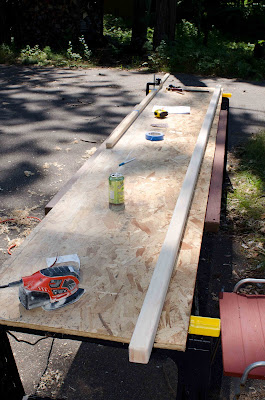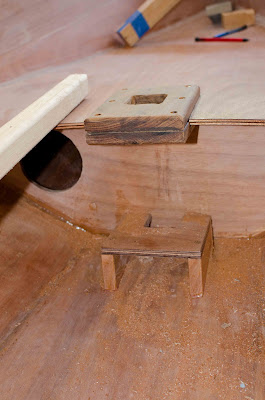I've been working all year on the boat but have been remiss in updating this blog, so here is the progress I've made on my Skerry:
When I resumed work in the spring 2011 I finished sanding the epoxy coats on the interior and began to sand the epoxy on the exterior of the hull which proved to be a lot quicker and easier.
After sanding, I applied two coats of primer and then three coats of Interlux Brightsides paint to the hull, with sanding in between each coat. I thinned the paint with 10% thinner, applied with a thin foam roller and tipped all bubbles with a foam brush. This process seemed to work pretty well with minimal runs and brush marks.
I made the decision to purchase the sail kit, but decided to go with a balanced lug rig sail instead of the sprit sail. For this configuration the sailmaker recommended that the sail be lowered on the mast and that the standard mast be raked 7 degrees aft to keep the sail CE directly above the daggerboard.
To accomplish that end I installed the mast step per plan, then designed a new mast partner on the forward seat lip, moving the hole aft about 1.2 inches which will rake the mast the required amount. Once glued and screwed in place it's really solid.
Next I applied three coats of varnish to the interior.

















